Even the 741 shouldn't be this bad but you could be running into slew rate limit problems. Firstly, for small signals, you should be able to get a gain of about 40dB. Here's the open loop gain response: -

Without any feedback at all, the 741 should still provide amplification of about 40dB at 7kHz. Shown on the graph above are two red lines that correspond to 7kHz and about 40dB. This is the small signal amplification that is possible with the 741. The graph is taken from the uA741 (because I couldn't locate an adequate picture of the LM741 so you need to do a bit of research to verify it is about the same. I believe it will be but please do check.
If you are trying to amplify with a gain of 2 (6dB) I'd expect a flat response up to about 300kHz (3dB point). You can also see this from the above graph by running your eye along from where 6dB is on the vertical scale and seeing where this crosses the thick black line and reading the frequency value on the X axis.
Slew rate limiting - this could be your problem - try reducing the signal amplitude to (say) 1Vp-p - does this improve things? Slew rate limits for the 741 are about 0.5V per microsecond and this means that if you are trying to produce an output that is 10Vp-p, the output rise time will be no faster than 20 microseconds. Correspondingly the fall time will also be 20 microseconds with the resultant approximate maximum frequency of \$\dfrac{1}{40\times 10^6}\$ = 25kHz. Again, this doesn't sound like the problem but please do check.
Finally, parasitic capacitances may be affecting your choice of feedback resistor. If Rf is in the order of 1M ohm and there is 10pF effectively across the 1M, the 3dB point of the op-amp circuit will only be around 15kHz.
In conclusion, I would start to suspect slew rate as your problem and maybe you are using resistors that are too high in value. Other than that you should get a reasonably flat frequency response to over 100kHz for a gain of 2.
